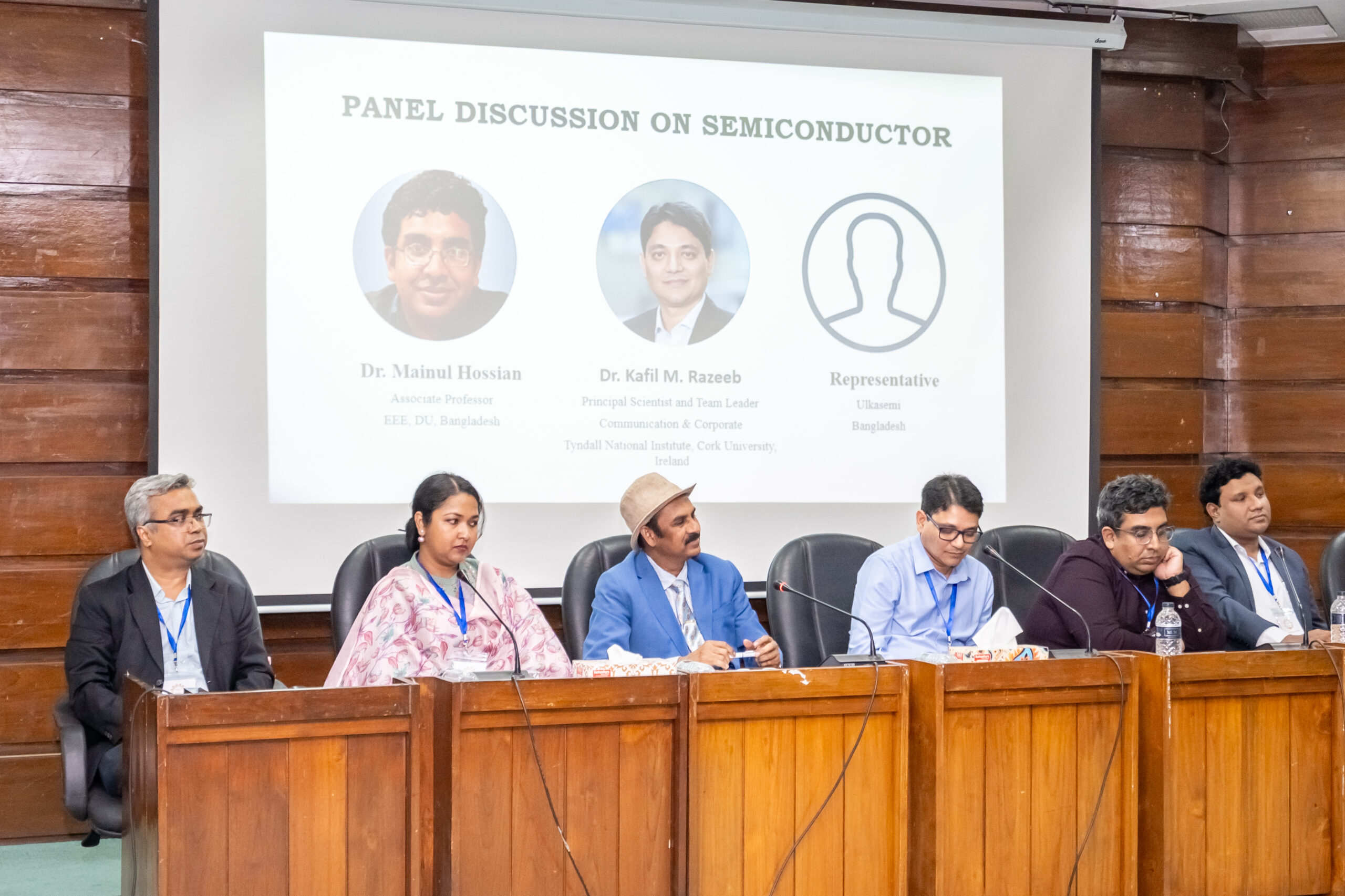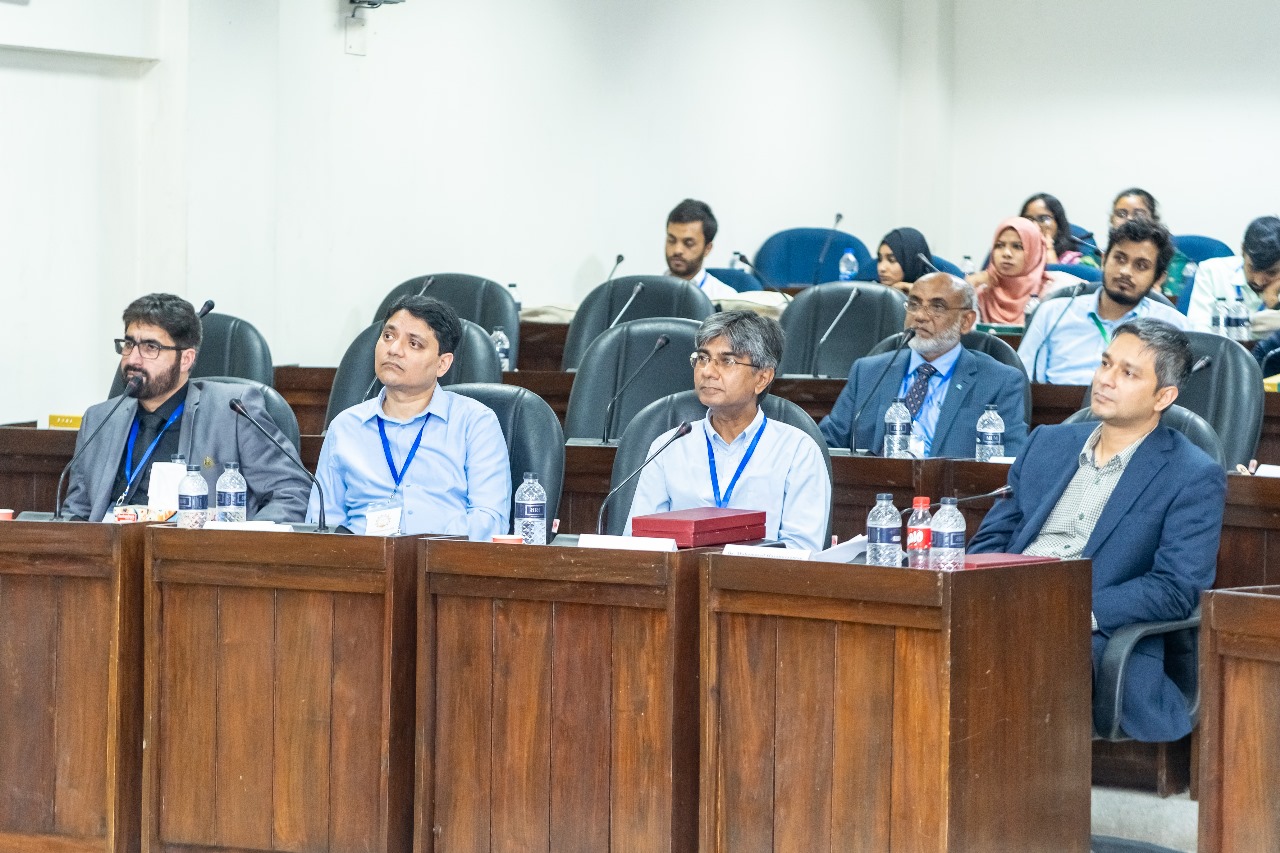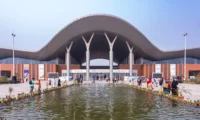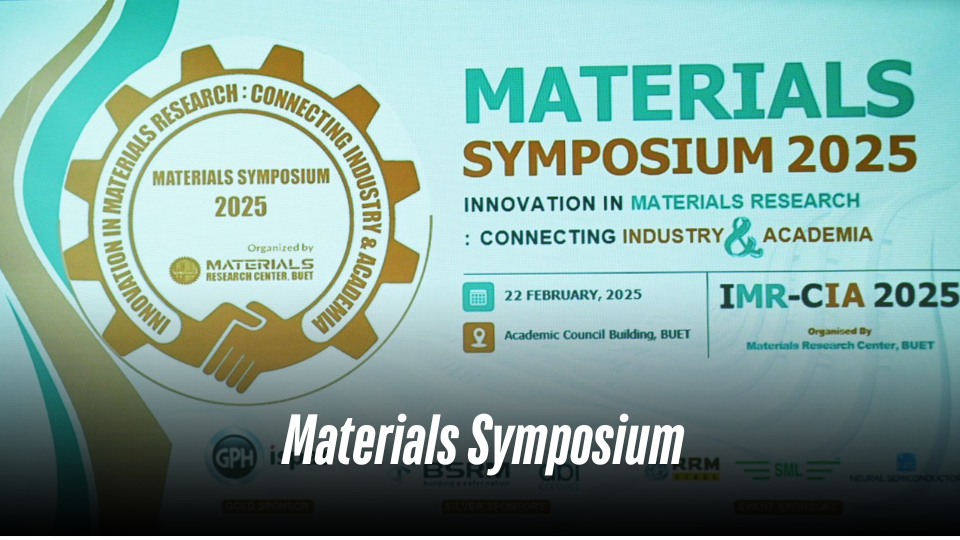
With the aim of connecting academia and industry, the Bangladesh University of Engineering and Technology (BUET) hosted the Innovation in Materials Research – Connecting Industry and Academia (IMR-CIA 2025) symposium on February 22, 2025. The one-day event, held at BUET’s Academic Council Auditorium, brought together leading scientists, engineers, and industry pioneers to explore advancements in materials science and their real-world applications.
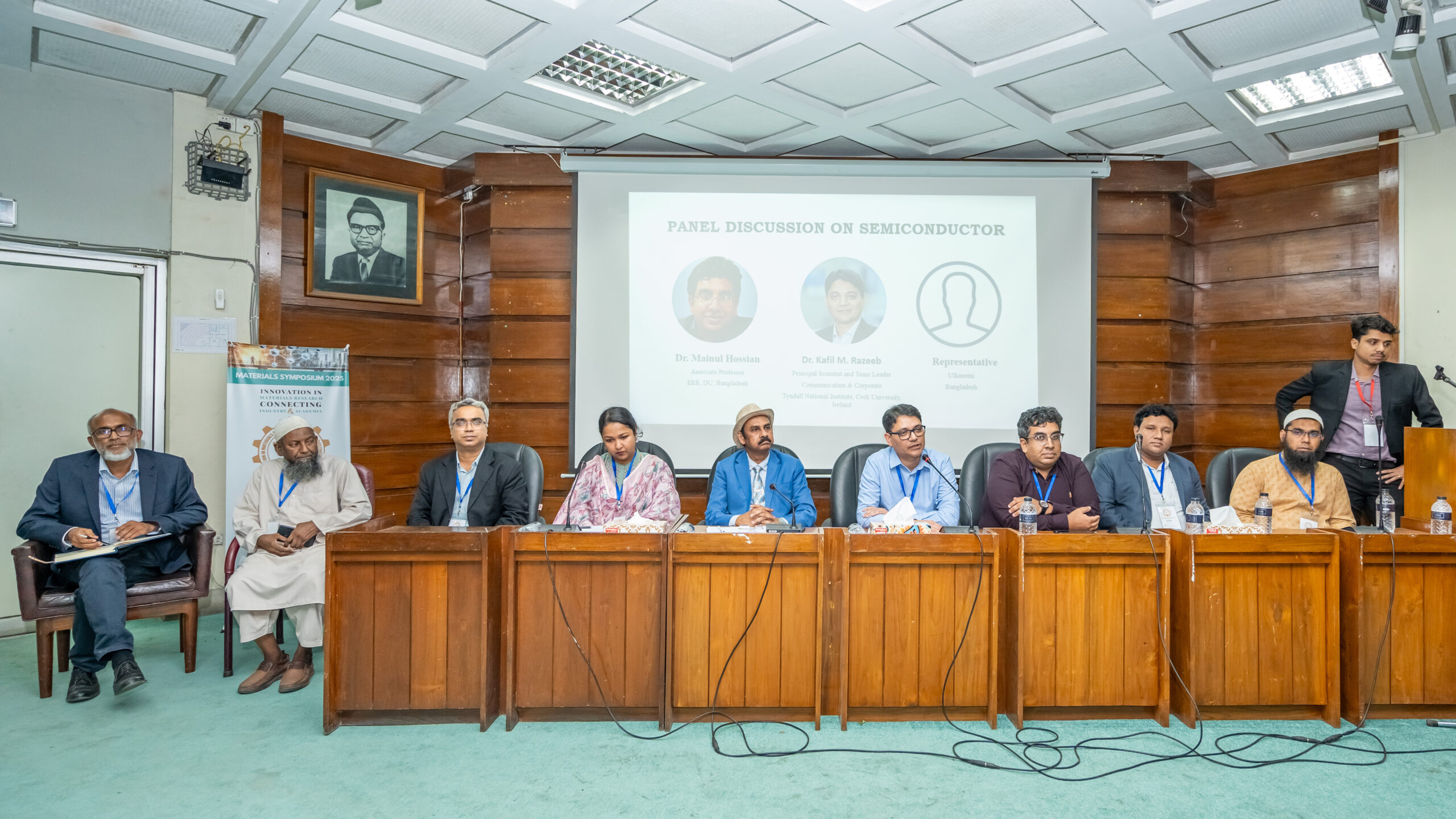
Chaired by Dr. Fahmida Gulshan, Professor, Department of Materials and Metallurgical Engineering, BUET and co-chaired by Dr. Muhammad Hasanuzzaman, Associate Professor, Department of Nanomaterials and Ceramic Engineering, BUET, the symposium was organized by a distinguished committee of Materials Research Centre, BUET, composed of experts in the field of materials science. The chief patron of the organization is Prof. Dr. A.B.M. Badruzzaman, Vice-Chancellor, BUET.
The symposium was presided over by Dr. Fahmida Gulshan. It commenced with a welcome speech by Dr. Muhammad Hasanuzzaman. Prof. Dr. A.B.M. Badruzzaman, gave his speech as the chief guest. A plenary speech was then delivered by Prof. Dr. A.S.M.A. Haseeb, Head, NCE, BUET, Bangladesh.
The event featured experts from both academia and industry, who shared insights on the latest breakthroughs in materials science, manufacturing innovations, and strategies to foster collaboration between research institutions and corporate enterprises.
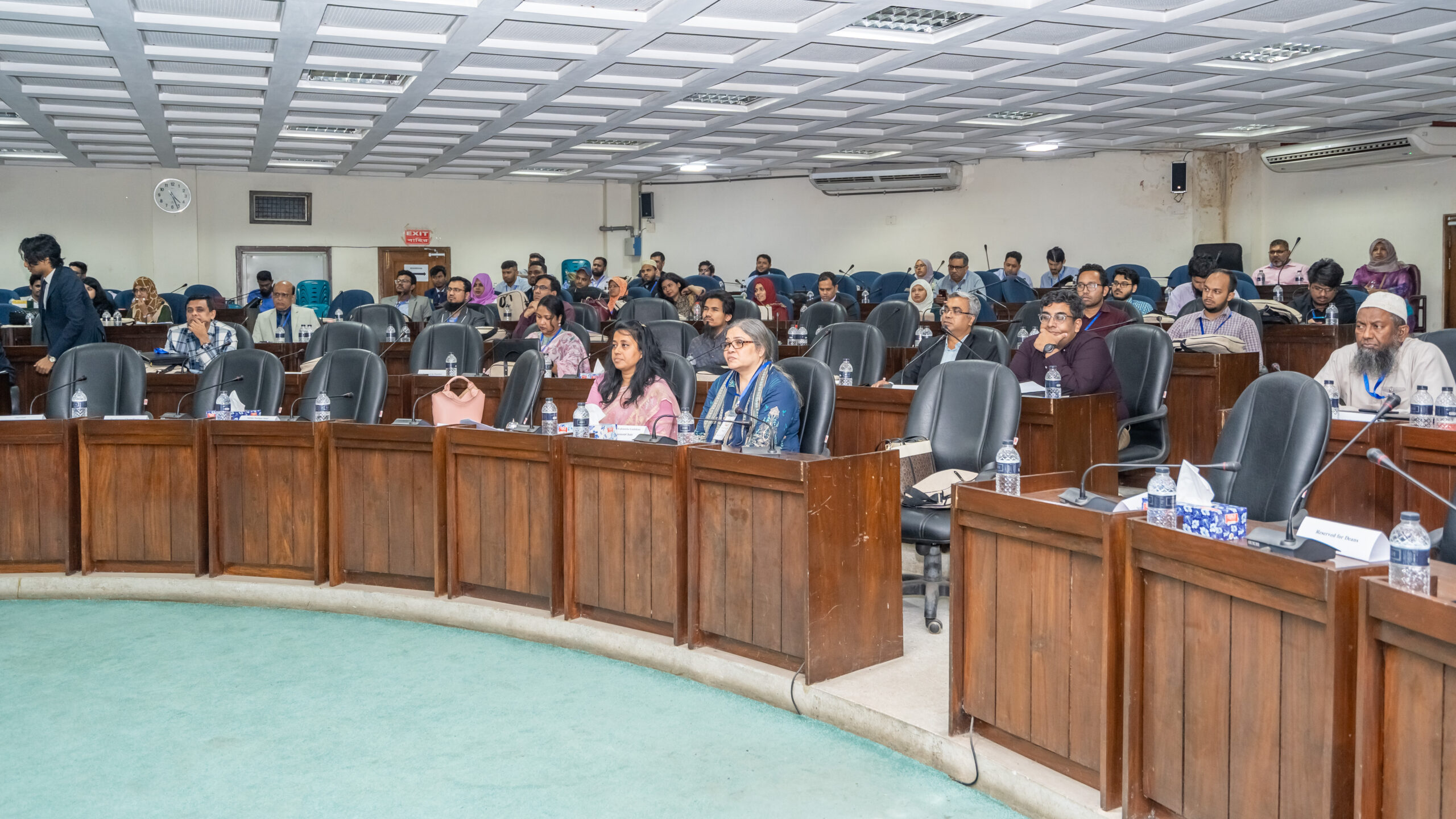
The symposium focused on four major themes, each representing a crucial area in modern materials research:
Steel: With sustainability in focus, discussions delved into emerging high-strength steels for automotive and construction applications, innovations in steel recycling and green steel production, and advanced corrosion-resistant coatings.
Ceramics, Glass, and Cement: Industry leaders highlighted advancements in energy-efficient manufacturing, AI-automated process optimizations, product diversification and waste utilization strategies for economic and environmental benefits.
Semiconductors: With the global chip shortage still a concern, speakers discussed the challenges in semiconductor scaling, the role of advanced materials in next-generation electronics, and sustainable manufacturing practices.
Additive Manufacturing: Experts showcased breakthroughs in 3D printing for industrial applications, material characterization, and AI-enhanced manufacturing processes, emphasizing its potential to revolutionize supply chains.
Renowned experts from leading organizations and academic institutions delivered keynote speeches on groundbreaking advancements in materials science and manufacturing. They were – from Intel Corporation. USA – Dr. Zakir Ahmed, Research Scientist, Intel Labs; Dr. Md Waliullah Khan Nomani, PTD Module and Integration Yield Engineer, PTD; Dr. Shaestagir Chowdhury, Principal Engineer; Dr. Syed Samsul Amin, Principal Engineer & Packaging Architect.
Other honorable speakers included Dr. Kafil M. Razeeb, Principal Scientist and Team Leader, Tyndall National Institute – Cork University, Ireland; Prof. Dr. Syed Ansar Md. Tofail, Head, Physics, University of Limerick, Ireland; Mr. Mohammad Zahirul Hoque, Director, Q.C. Metallurgical Laboratory, Inc, IOWA, USA; Dr. Ehtsham-Ul Haque, Assistant Professor, Dept. of Physics, University of Limerick, Ireland; Dr. Nazmul Alam, Principal Research Scientist (Retd.), CSIRO, Adjunct Professor, RMIT University, Australia; Dr. Md Zakaria Quadir, Associate Professor, School of Civil and Mechanical Engineering (CME), Curtin University, Australia; Dr. Qumrul Ahsan, Vice-Chancellor, University of Asia Pacific, Bangladesh; Dr. Sheikh Manjura Hoque, Head, Materials Science Division, Atomic Energy Commission, Bangladesh.
The symposium also hosted specialized panel discussions featuring leading academics and industry professionals in the steel, ceramics, semiconductor, additive manufacturing fields.
Steel Industry Panelists included Dr. Sazzad Ahmed, Associate Professor, MME, CUET, Bangladesh and Mr. Md. Saiful Islam, Deputy General Manager, Research and Development, GPH Ispat Limited, Bangladesh.
From Semiconductor Industry Panel, Dr. Mainul Hossian, Associate Professor, EEE, DU, Bangladesh and Dr. Kafil M. Razeeb, Principal Scientist and Team Leader, Tyndall National Institute-Cork University, Ireland gave their speech.
Additive Manufacturing Panelists included Dr. M. Tarik Arafat, Head, BME, BUET, Bangladesh, Dr. Md. Jalal Uddin, P. Eng., Director, BITAC, Bangladesh, Dr. Md Zakaria Quadir, Associate Professor, School of Civil and Mechanical Engineering (CME), Curtin University, Australia.
The Ceramics Industry Panelist was senior journalist Mr. Anwar Haq, Head of Brand, Communication & Corporate, Pa-Wang Ceramic Industry Ltd., Bangladesh.
And, the Entrepreneurship Panel was comprised of Engr. Md. Fahim Rahman, Head of Operations, METTALLIED, Bangladesh.
The symposium also served as a platform for young researchers, with a competitive poster competition drawing entries from students across multiple disciplines. The top ten posters received recognition awards, while the top three submissions were awarded BDT 25,000, BDT 15,000, and BDT 10,000, respectively.
This initiative provided an incredible opportunity for young researchers to showcase their work and gain insights from seasoned professionals into the evolving landscape of materials science.
A recurring theme of the symposium was the urgent need to strengthen partnerships between industry and academia. Speakers emphasized that collaborative research, workforce development, and industry-driven projects are crucial to accelerate technological progress. Case studies from companies like Intel Corporation and GPH Ispat Ltd. demonstrated how industry collaborations have turned theoretical research into practical applications.
With its blend of insightful discussions, expert panels, and student engagement, IMR-CIA 2025 successfully established a precedent for future collaborations between academia and industry.
At its core, this was more than just a symposium—it was a call to action for the next generation of innovators.
Speakers emphasized the need for young minds to embrace cutting-edge technology, think beyond conventional boundaries, and actively contribute to scientific advancements. By fostering collaboration between industry and academia, the event aimed to create an ecosystem where students, researchers, and professionals can work together to drive transformative change in materials science and engineering.
As Bangladesh moves toward an innovation-driven economy, the knowledge shared at this symposium is expected to play a crucial role in achieving sustainable advancements in materials science and manufacturing.



